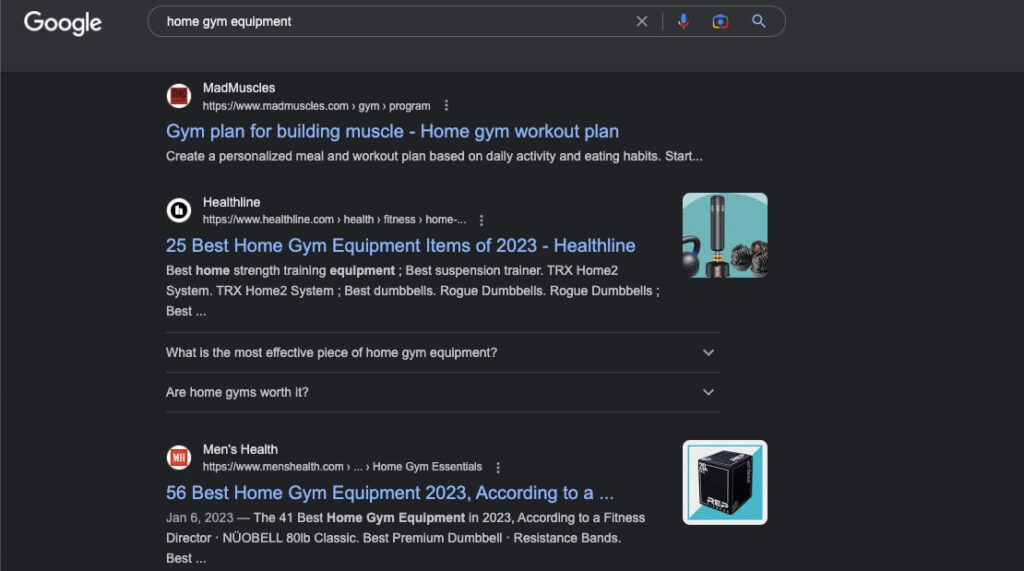In today’s complex and ever-evolving Search Engine Optimization (SEO) landscape, search engines use complex algorithms to rank websites based on content quality, relevance, and authority.
To succeed in SEO, businesses must create high-quality, engaging content that meets user needs and is optimized for search engines.
Creating content optimized for SEO is critical in e-marketing as it helps businesses increase their online visibility and bring more organic traffic to their website.
Through leveraging SEO content writing, businesses can enhance their sales and revenue by expanding their online reach to a broader audience of potential customers.
This article will explore in-depth what SEO content writing is and provide tips and best practices for businesses looking to improve their online presence.
What is SEO Content Writing?
SEO content writing, or “writing for SEO,” is strategically planning, creating, and optimizing content to rank higher in search engines like Google. This involves an extensive research of relevant keywords and creating optimized content that fulfills the user’s intent.
In other words, SEO writing involves optimizing the content on the page so that search engines can easily crawl it and rank it favorably on the search engine results page (SERP).
Without SEO writing, the content may not be search engine friendly, and the crawlers may not even understand what the page is about.
For instance, Google uses “spiders” to crawl content to determine its relevance. They analyze the web page’s language and learn about its content during this process.
Therefore, incorporating SEO writing techniques is essential to ensure that content ranks higher in search engines and reaches a wider audience, resulting in increased organic traffic and better online visibility.
To achieve this goal, you need to focus on three critical factors:
- Understanding what searchers are looking for when they use your target keyword (known as search intent),
- Creating high-quality content that provides the best possible answer to a given search query (based on thorough research and knowledge),
- Presenting that answer in a clear and easy-to-understand manner (which requires strong writing skills).
In addition to these elements, it is also crucial to understand on-page SEO elements such as image alt text, meta tags, and internal links, among others.
The Benefits of SEO Content Writing
The benefits of SEO content writing cannot be ignored in today’s digital age. High-quality articles and blog posts optimized for search engines can significantly enhance your business strategy and online presence.
However, content is not just about numbers. The impact of well-crafted content on brand image and authority cannot be overstated.
Persuasive and informative content is crucial, and more and more companies are adopting content marketing strategies to engage with their customers in new ways. With the help of optimized content, your business can thrive and establish itself as an expert in the industry.
So, what are the advantages of SEO content writing?
- Higher search engine rankings lead to more organic traffic to a website, which can ultimately result in more conversions and revenue. By regularly producing quality SEO content, you can improve your online presence and stay ahead of the competition in your industry.
- Increased organic traffic is valuable because it consists of users actively searching for information about the business’s products or services. By ranking higher in SERPs, you can gain visibility and credibility, ultimately leading to more clicks, conversions, and revenue.
- Better user engagement and experience: SEO writing creates content optimized for search engines while providing value and relevance to the user. Using relevant keywords and topics makes users more likely to stay on the page. In addition, readability and engaging visuals further enhance the experience.
- Higher conversion rates: SEO writing creates content that addresses your target audience’s needs and pain points and includes relevant keywords. This attracts qualified traffic, increases engagement, and establishes trust, leading to higher conversion rates.
- Increased brand awareness and authority: With valuable content ranking highly, businesses can establish thought leadership, and recognition, generate leads and sales, and boost credibility. Furthermore, consistently publishing high-quality SEO-optimized content enhances reputation, attracts customers, and grows the brand.
How to Write Successful SEO Content
SEO is essential as Google receives 8.5 billion daily searches, and high page-one rankings yield free, relevant traffic. As paid advertising increases and social media becomes harder to engage with, organic traffic is a significant marketing channel.
Therefore, the question arises: How can you attain those desirable page-one organic rankings?
Fortunately, the process is relatively straightforward and accessible for anyone to follow. After conducting thorough keyword research and identifying the target keywords, each blog post undergoes a set of seven distinct SEO writing stages.
The following steps are consistently applied to ensure high-quality content and optimal search engine ranking:
1. Research SERPs for Target Keywords
To write for SEO, understanding search intent is crucial. It refers to the intention behind a searcher’s query, such as finding recommendations for pizza restaurants in New York when searching for “best pizza places in New York.”
Failure to comprehend search intent can adversely affect your content’s ranking on Google’s first page, regardless of quality.
For example, if you want to optimize your article for “home gym equipment,” you may assume that users want to buy gym equipment for their homes.
Despite that, the top search results are articles on the best gym equipment to use at home, not online stores selling gym equipment.

Researching and analyzing the search engine results page (SERP) before writing content is essential.
You can use SEO tools or Google the keyword to check for featured snippets (short previews of information that Google displays on its results page). This approach can help you identify the type of content likely to rank well for the keyword.
Google teaches algorithms to evaluate search intent accurately and encourages content creators, SEO writers, and web admins to publish content that adequately answers users’ questions.
That is why matching search intent with the content format, message, and call to action is also necessary.
2. Create an SEO Content Outline
To improve the copy’s overall quality and avoid any confusion, drafting an outline before starting the writing process is recommended. The outline process involves including essential SEO details, such as addressing the common queries people ask while searching for a particular keyword.
Furthermore, it involves determining the article’s heading, subheadings, goals, and approach angle, making it stand out from similar articles.
There are several reasons for doing so:
- Outlines guarantee the inclusion of vital SEO elements, such as incorporating relevant keywords and addressing the searchers’ intent by answering their most common questions.
- An outline helps enhance the flow of ideas before beginning the writing. Otherwise, the ideas may be scattered, and reorganizing them can become daunting, leading to a poor-quality article.
- Outlines make it easier to outsource content at scale, ensuring that even mediocre writers can produce quality content with proper guidance.
Therefore, outlines are essential to maintain a consistent level of quality and increase content production efficiently.
3. Maximize SEO Elements
Achieving a high rank on Google requires more than just having a great copy. On-page SEO is an essential factor that must be considered for attaining those coveted page #1 rankings.
Optimizing various on-page elements is necessary during the writing process, including the title tag, meta description, open graph tag, URL slug, page or post categorization, image alt text, and more.
It is crucial to optimize every page on your site in this manner, and most content management systems (CMSs) offer plugins or settings for uploading this data. In cases where a CMS does not provide such features, switching to one that does is highly recommended.
4. Add Internal Links
Adding internal links from other pages on your website to the new article or blog is highly recommended. This helps search engines and users navigate the latest content and creates a user-friendly site.
Moreover, it assists Google in indexing the new page by establishing what the content is about through anchor text.
Employing the “site:” operator in Google search is a simple technique to identify opportunities for internal linking. By typing “site:yoursitehere.com [related keyword here]” into Google, relevant pages containing the related keyword will be displayed.
If the search operator does not provide useful results, an exact-match search operator can be used by putting the keyword in quotes, such as “site:leadinmedia.net “SEO writing”.”
After identifying relevant pages, select a few to add internal links that point to the newly published post.
Including at least three to five internal links per copy are recommended, but the number may vary depending on the number of pages on the website. If a website has thousands or tens of thousands of pages, dozens or even hundreds of internal links may be necessary.
5. Link to Reputable Websites
The primary objective of search engines is to make quality information widely accessible. By linking to reputable sites, you demonstrate to search engines that you are connected to other credible sources and rely on valuable and reliable information.
Using links to cite information sources is a prevalent method of indicating the origins of the information presented.
However, it is essential to refrain from using information from unreliable or low-quality websites. If your site contains links to spammy sites, your content may also be considered spammy.
Therefore, it is advisable to link to reputable and high-level websites that are popular and credible sources in their own right.
Best Practices for SEO Content Writing Success
It is essential to prioritize originality and have a comprehensive grasp of effective SEO techniques to craft captivating SEO writing and maintain reader engagement.
To achieve this, consider the following timeless tips:
- Prioritize Your Audience & Compelling Content for Backlinking
To ensure the effectiveness of SEO, it’s crucial to understand your audience and tailor your writing to them. While SEO content writing is essential, backlinking is equally important in optimizing your website’s visibility.
Your content should be compelling enough to attract backlinks from other websites and enhance your SEO performance.
Therefore, it’s imperative to prioritize your human readers over search engines while crafting your content. On the other hand, overusing keywords or sounding too automated may discourage other sites from linking back to your content in the future.
- Craft Click-Worthy Headlines
Remember, just getting your content to rank high on SERPs doesn’t guarantee readership. You also need to entice potential readers to click on your link among all the other options. That is why crafting an attention-grabbing headline is crucial for making a good first impression and getting clicks.
Compelling headlines are concise but still convey the essence of what the page is about. Also, pay attention to your metadata – it’s a chance to provide extra context that could help persuade someone to click.
- Make Your Content Scannable for Readers
Typically, readers do not read your content thoroughly, especially if they came looking for a quick answer. Therefore, to optimize your content’s SEO, it is important to ensure readers can easily scan the page for the information they need.
One way to achieve this is by structuring your content with keyword-rich headlines. This practice not only assists users in swiftly locating the information they seek but also aids search engines in comprehending the pelevance of your content.
To improve accessibility, use shorter sentences and paragraphs. Also, consider using bulleted lists, pull quotes, and supplementary graphics to make your content more scannable. These options can also help break up lengthy content into easily digestible pieces.
- Use Images and Videos
People have become more reliant on visual aids to comprehend information. Therefore, incorporating the right images into your content can make it more attractive and engaging.
In fact, readers may find your posts incomplete if they lack visuals, as they have come to expect them.
Luckily, there are various ways to leverage imagery to enhance your SEO writing. For example, you may use optimized stock images relevant to your topic or supplement your content with informative graphs, charts, or infographics.
Moreover, you can take creativity a step further by creating your unique images that complement your writing.
Adding videos can also be an effective strategy for capturing your audience’s attention and bringing your message to life.
- Tap into Social Media Reach
When it comes to SEO content writing, gaining visibility on search engines is undoubtedly a top priority. However, it is crucial to recognize the potential boost that social media can offer to your content.
After all, the ultimate goal is to connect with your intended audience wherever they may be, and social media platforms are, by all means, among the most popular hangouts.
Thus, sharing your website’s content across your social media channels is vital. It would help if you made it effortless for your readers to share your content, too.
To make sharing a breeze, incorporate share buttons on all your SEO pieces, which can serve as a prompt and streamline the process for your audience.
Ready to Boost Your Online Presence with SEO Content Writing?
It is important to remember that SEO writing can make or break your content. Optimizing your website’s content for search engines and using relevant keywords can increase traffic, engagement, and conversion rates. This ultimately leads to better business results.
At LeadIn Media, we recognize the crucial role of SEO content writing in achieving your business goals.
If you want to stand out from the competition and reach your target audience effectively, don’t hesitate to contact us us today.
We will work with you to develop a tailored plan to achieve your objectives and keep a steady stream of top-quality content flowing on your website.




